Vandaag duiken we in het concept van intervalschaalmeting – een hoeksteen in de wereld van de statistiek die misschien complex klinkt, maar ongelooflijk interessant en verrassend relevant is voor ons dagelijks leven.
Van de manier waarop we de tijd aflezen tot hoe we de temperatuur meten, intervalschalen spelen een cruciale rol. Laten we dit concept samen ontrafelen en dieper ingaan op de essentie, unieke kenmerken, vergelijkingen met andere schalen en praktijkvoorbeelden!
Inhoudsopgave
- Wat is intervalschaalmeting?
- Belangrijkste kenmerken van intervalschaalmeting
- Voorbeelden van intervalschaalmetingen
- Intervalschalen vergelijken met andere soorten schalen
- Verbeter uw onderzoek met interactieve beoordelingsschalen
- Conclusie
Tips voor effectief onderzoek
Wat is intervalschaalmeting?
Intervalschaalmeting is een soort gegevensmeetschaal die wordt gebruikt op het gebied van statistiek en onderzoek om het verschil tussen entiteiten te kwantificeren. Het is een van de vier niveaus van meetschalen, naast nominale, ratioschalen en ordinale schaal voorbeeld.
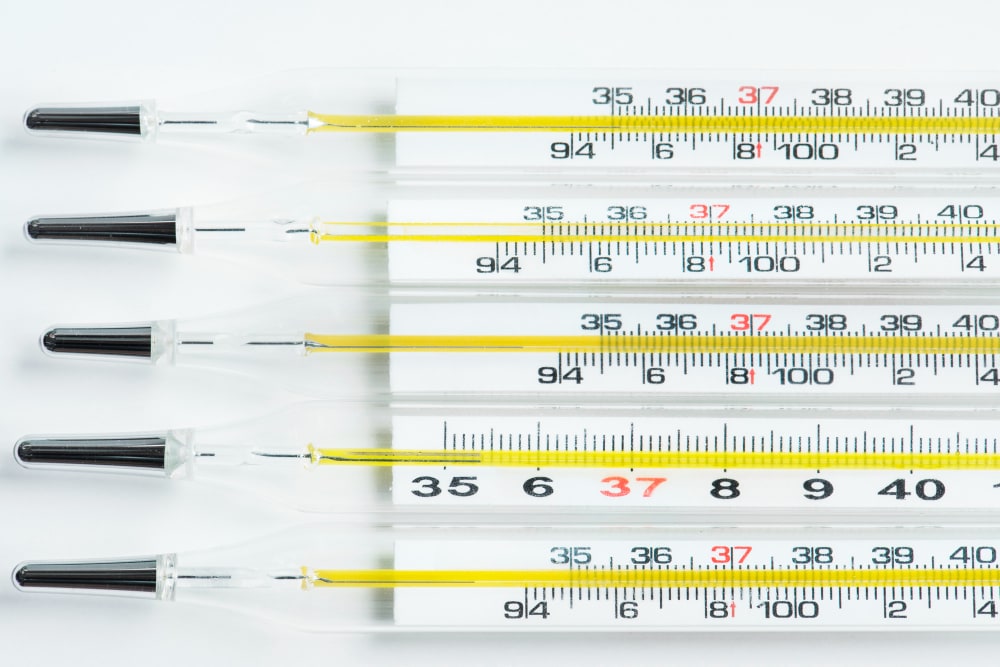
Het is heel nuttig op veel gebieden, zoals psychologie, onderwijs en maatschappijonderzoek, omdat we hiermee bijvoorbeeld kunnen meten hoe slim iemand is (IQ-score), hoe warm of koud het is (temperatuur) of hoe laat het is.
Belangrijkste kenmerken van intervalschaalmeting
Intervalschaalmeting heeft onderscheidende kenmerken die het onderscheiden van andere typen meetschalen. Het begrijpen van deze kenmerken is cruciaal voor het correct gebruiken van intervalschalen in onderzoek en data-analyse. Dit zijn de belangrijkste kenmerken:
Overal gelijke stappen (gelijke intervallen):
Het grote voordeel van intervalschalen is dat de afstand tussen twee getallen naast elkaar altijd hetzelfde is, waar u zich ook op de schaal bevindt. Dit maakt het erg handig om te vergelijken hoeveel meer of minder het ene ding is vergeleken met het andere.
- Bijvoorbeeld, de sprong van 10°C naar 11°C is hetzelfde als de sprong van 20°C naar 21°C als het om temperatuur gaat.
Nul is slechts een tijdelijke aanduiding (willekeurig nulpunt):
Bij intervalschalen betekent de nul niet "er is niets". Het is gewoon een punt dat is gekozen om vanaf te beginnen met tellen, niet zoals bij sommige andere schalen waar nul betekent dat er iets volledig ontbreekt. Een goed voorbeeld is dat 0°C niet betekent dat er geen temperatuur is; het betekent alleen dat het water daar bevriest.
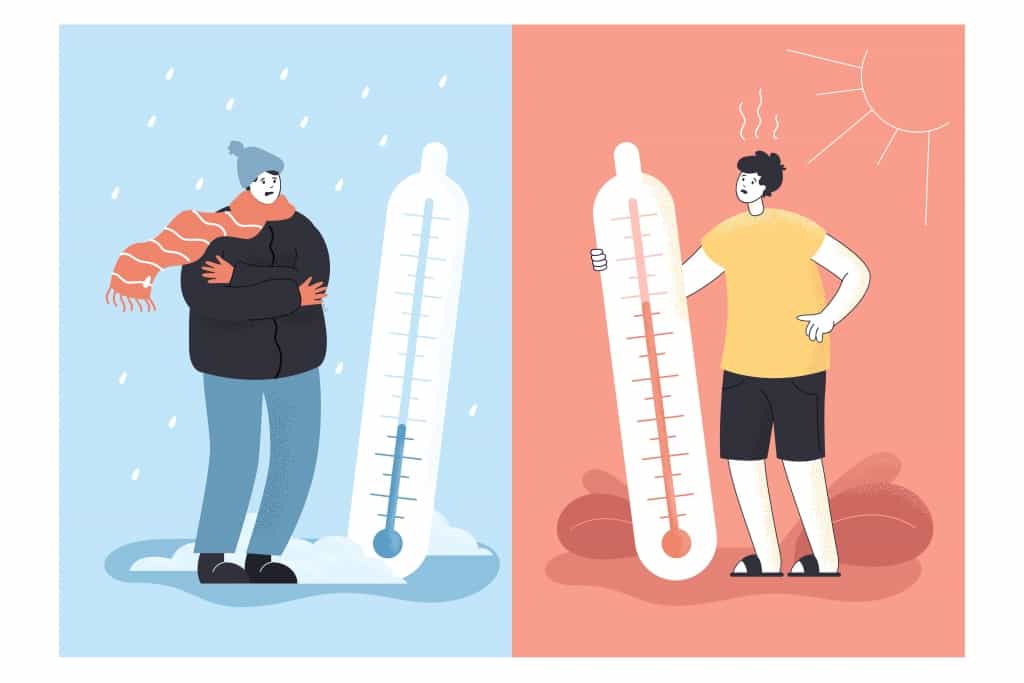
Alleen optellen en aftrekken:
Je kunt intervalschalen gebruiken om getallen op te tellen of weg te halen om het verschil tussen getallen te berekenen. Maar omdat nul niet "geen" betekent, kun je vermenigvuldiging of deling niet gebruiken om te zeggen dat iets "twee keer zo warm" of "half zo koud" is.
Over verhoudingen kan niet gesproken worden:
Omdat nul op deze schaal niet echt nul is, heeft het geen zin om te zeggen dat iets "twee keer zoveel" is. Dit komt allemaal doordat we een echt startpunt missen dat "geen" betekent.
Cijfers die logisch zijn:
Alles op een intervalschaal is in orde en je kunt precies zien hoeveel meer het ene getal vergeleken wordt met het andere. Hierdoor kunnen onderzoekers hun metingen organiseren en praten over hoe groot of klein de verschillen zijn.
Voorbeelden van intervalschaalmetingen
Intervalschaalmeting biedt een manier om verschillen tussen items te kwantificeren en te vergelijken met een gelijke afstand tussen de waarden, maar zonder een echt nulpunt. Hier zijn enkele alledaagse voorbeelden:
1/ Temperatuur (Celsius of Fahrenheit):
De temperatuurschalen zijn klassieke voorbeelden van intervalschalen. Het temperatuurverschil tussen 20 °C en 30 °C is gelijk aan het verschil tussen 30 °C en 40 °C. 0 °C of 0 °F betekent echter niet dat er geen temperatuur is; het is slechts een punt op de schaal.
2/ IQ-scores:
De scores voor het intelligentiequotiënt (IQ) worden gemeten op een intervalschaal. Het verschil tussen de scores is consistent, maar er is geen echt nulpunt waar intelligentie ontbreekt.
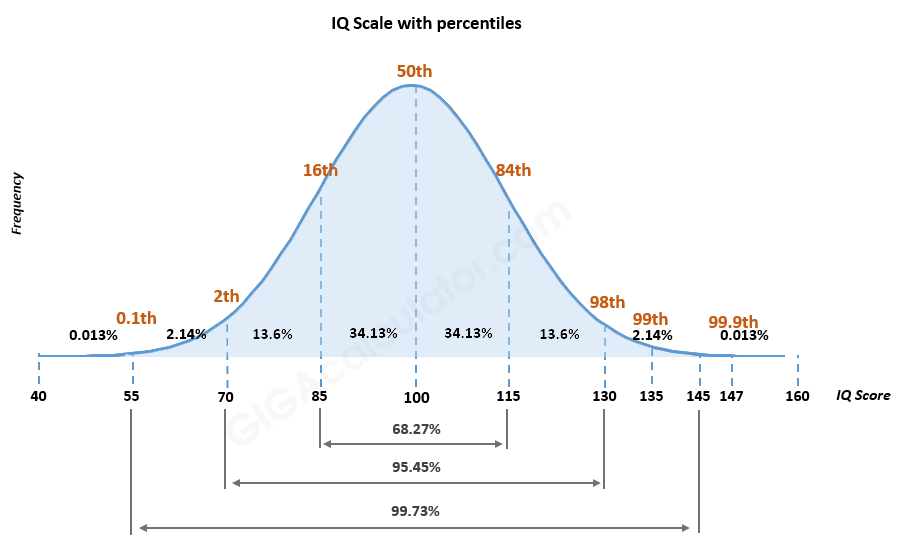
3/ Kalenderjaren:
Wanneer we jaren gebruiken om tijd te meten, werken we met een intervalschaal. De kloof tussen 1990 en 2000 is hetzelfde als tussen 2000 en 2010, maar geen enkel "nul"-jaar staat voor de afwezigheid van tijd.
4/ Tijd van de dag:
Evenzo is de tijd van de dag op een 12-uurs of 24-uurs klok een intervalmeting. Het interval tussen 1:00 en 2:00 uur is hetzelfde als tussen 3:00 en 4:00 uur. Middernacht of XNUMX:XNUMX uur vertegenwoordigt geen afwezigheid van tijd; het is slechts een punt in de cyclus.
5/ Gestandaardiseerde testscores:
Scores op tests zoals de SAT of GRE worden berekend op een intervalschaal. Het verschil in punten tussen de scores is gelijk, waardoor de resultaten direct met elkaar kunnen worden vergeleken. Een score van nul betekent echter niet dat er geen kennis of vaardigheden zijn.
Deze voorbeelden illustreren hoe intervalschalen worden gebruikt in verschillende aspecten van het dagelijks leven en in wetenschappelijk onderzoek, waardoor nauwkeurige vergelijkingen mogelijk zijn zonder te vertrouwen op een echt nulpunt.
Intervalschalen vergelijken met andere soorten schalen
Nominale schaal:
- Wat het doet: Plaatst dingen gewoon in categorieën of namen, zonder te zeggen welke beter is of meer heeft.
- Voorbeeld: Fruitsoorten (appel, banaan, kers). Je kunt niet zeggen dat een appel "meer" is dan een banaan; ze zijn gewoon anders.
Ordinale schaal:
- Wat het doet: Rangschikt zaken, maar vertelt ons niet hoeveel beter of slechter de ene is dan de andere.
- Voorbeeld: Raceposities (1e, 2e, 3e). We weten dat de eerste beter is dan de tweede, maar niet hoeveel.
Intervalschaal:
- Wat het doet: Rangschikt niet alleen dingen in volgorde, maar vertelt ons ook het exacte verschil ertussen. Het heeft echter geen echt startpunt van nul.
- Voorbeeld: Temperatuur in Celsius zoals eerder vermeld.
Verhoudingsschaal:
- Wat het doet: Net als de intervalschaal rangschikt hij dingen en vertelt hij ons het exacte verschil ertussen. Maar hij heeft ook een echt nulpunt, wat betekent dat er "niets" is van wat we ook meten.
- Voorbeeld: Gewicht. 0 kg betekent dat er geen gewicht is, en we kunnen zeggen dat 20 kg twee keer zo zwaar is als 10 kg.
Belangrijkste verschillen:
- Nominaal noem of label dingen gewoon zonder enige volgorde.
- rangtelwoord zet de zaken op een rij, maar zegt niet hoe ver die orders uit elkaar liggen.
- interval geeft ons de afstand tussen punten duidelijk weer, maar zonder een echt nulpunt. We kunnen dus niet zeggen dat iets "twee" zo groot is.
- Verhouding geeft wat het info-interval voor ons allemaal doet, en het heeft een echte nul, dus we kunnen vergelijkingen maken zoals "twee keer zoveel".
Verbeter uw onderzoek met interactieve beoordelingsschalen
Het opnemen van metingen in uw onderzoek of feedbackverzameling was nog nooit zo eenvoudig met AhaSlides' BeoordelingsschalenOf u nu gegevens verzamelt over klanttevredenheid, medewerkersbetrokkenheid of de mening van uw publiek, AhaSlides biedt een gebruiksvriendelijk platform dat het proces vereenvoudigt. U kunt snel aangepaste beoordelingsschalen maken die perfect aansluiten op uw enquête of onderzoek. Bovendien zorgt de realtime feedbackfunctie van AhaSlides voor directe interactie en betrokkenheid met uw publiek, waardoor dataverzameling niet alleen efficiënt maar ook boeiend is.
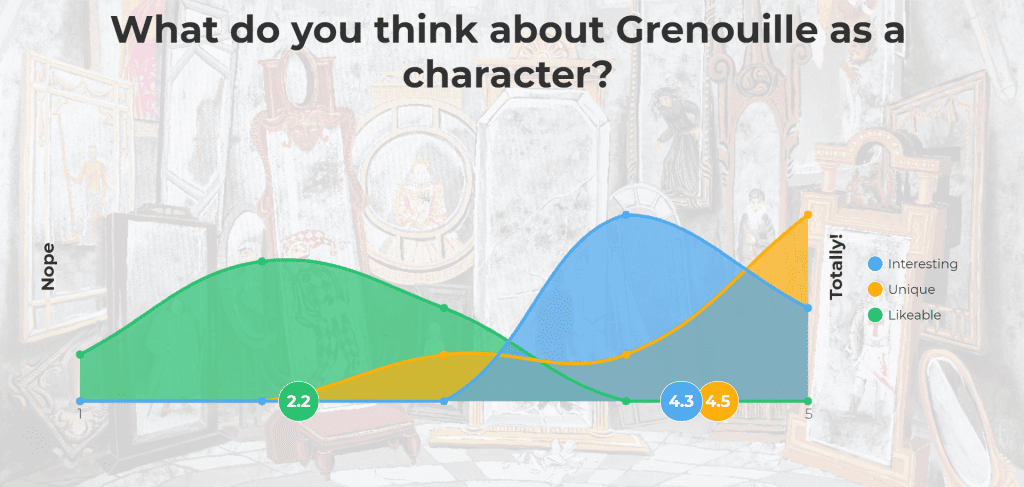
🔔 Ben je klaar om je onderzoek naar een hoger niveau te tillen met nauwkeurige en interactieve beoordelingsschalen? Begin nu met het verkennen van de mogelijkheden van AhaSlides. Templates en begin vandaag nog aan uw reis naar betere inzichten!
Conclusie
Het gebruik van intervalschaalmeting kan de manier waarop we data verzamelen en analyseren in onderzoek echt veranderen. Of u nu klanttevredenheid evalueert, gedragsveranderingen bestudeert of de voortgang in de loop van de tijd bijhoudt, intervalschalen bieden een betrouwbare en eenvoudige methode. Vergeet niet dat de sleutel tot het ontsluiten van inzichtelijke data begint met het kiezen van de juiste tools en schalen voor uw onderzoek. Omarm intervalschaalmeting en til uw onderzoek naar een hoger niveau van nauwkeurigheid en inzicht.
ref: formulieren.app | GrafPad | QuestionPro







